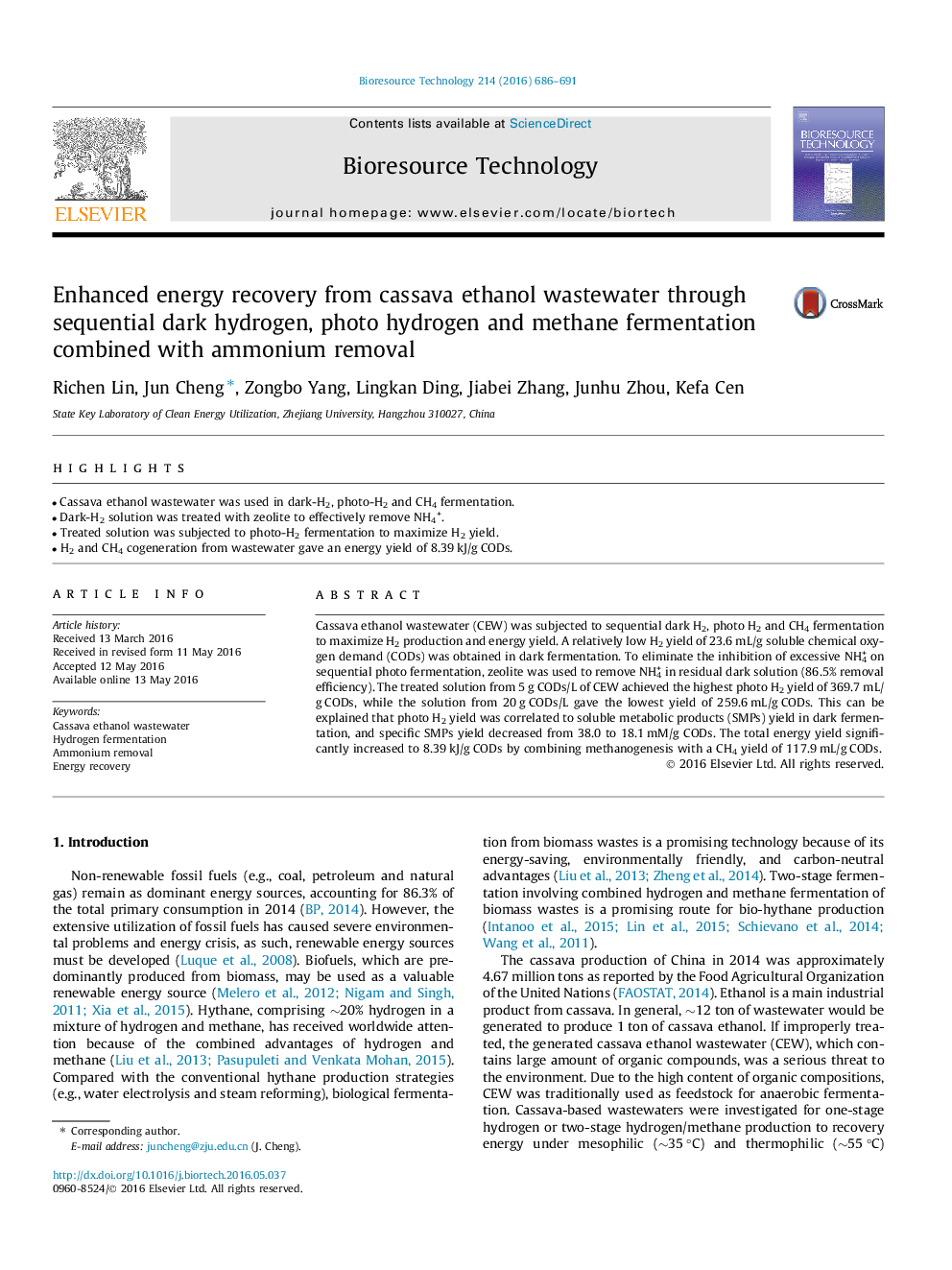| Article ID | Journal | Published Year | Pages | File Type |
|---|---|---|---|---|
| 679081 | Bioresource Technology | 2016 | 6 Pages |
•Cassava ethanol wastewater was used in dark-H2, photo-H2 and CH4 fermentation.•Dark-H2 solution was treated with zeolite to effectively remove NH4+.•Treated solution was subjected to photo-H2 fermentation to maximize H2 yield.•H2 and CH4 cogeneration from wastewater gave an energy yield of 8.39 kJ/g CODs.
Cassava ethanol wastewater (CEW) was subjected to sequential dark H2, photo H2 and CH4 fermentation to maximize H2 production and energy yield. A relatively low H2 yield of 23.6 mL/g soluble chemical oxygen demand (CODs) was obtained in dark fermentation. To eliminate the inhibition of excessive NH4+ on sequential photo fermentation, zeolite was used to remove NH4+ in residual dark solution (86.5% removal efficiency). The treated solution from 5 g CODs/L of CEW achieved the highest photo H2 yield of 369.7 mL/g CODs, while the solution from 20 g CODs/L gave the lowest yield of 259.6 mL/g CODs. This can be explained that photo H2 yield was correlated to soluble metabolic products (SMPs) yield in dark fermentation, and specific SMPs yield decreased from 38.0 to 18.1 mM/g CODs. The total energy yield significantly increased to 8.39 kJ/g CODs by combining methanogenesis with a CH4 yield of 117.9 mL/g CODs.
